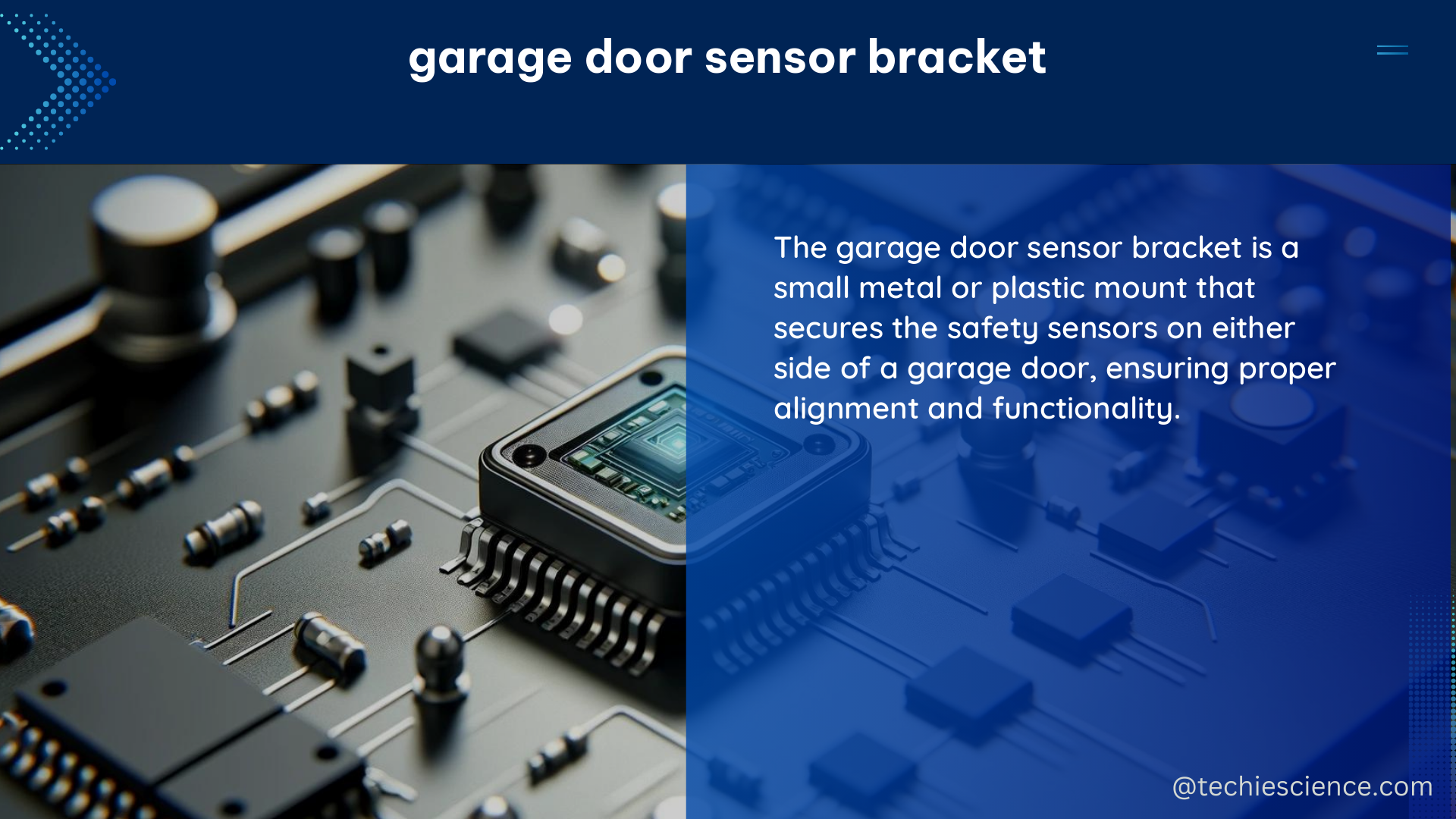The garage door sensor bracket is a crucial component of a garage door opener system, responsible for securely holding the safety sensors that prevent the door from closing when an obstruction is detected. The bracket’s positioning and alignment significantly impact the system’s functionality, ensuring the safety and smooth operation of your garage door.
Mounting Height and Sensor Placement
-
Mounting Height: The garage door sensor bracket should be installed 4 to 6 inches above the garage floor, as recommended by most manufacturers. This height ensures that the sensors can effectively detect obstructions, such as pets, children, or objects, in the door’s path.
-
Distance between Sensors: The distance between the two sensors should be precisely set according to the manufacturer’s instructions. Typically, the sensors are placed 6 to 8 feet apart, ensuring proper alignment and detection range. For example, in the OZ post, the sensors were initially too close, causing the door to open prematurely when the first horizontal wood bar crossed the sensors.
-
Sensor Alignment: The sensors must be aligned precisely to accurately detect the garage door’s movement. Misalignment can lead to false positives or negatives, affecting the system’s overall performance. Use a level and carefully measure the distance to ensure the sensors are perfectly aligned.
Bracket Material and Load Capacity

-
Bracket Material: Garage door sensor brackets are typically made of durable materials like metal or heavy-duty plastic to ensure stability and longevity. Metal brackets are generally more robust and can withstand the weight and vibrations of the garage door system better than plastic alternatives.
-
Load Capacity: While not directly related to the bracket itself, it’s essential to consider the garage door’s weight and the opener’s capacity. A heavier door may require a more robust bracket to support the sensors securely, preventing any sagging or misalignment.
DIY Considerations
-
Electrical Safety: When working with the garage door opener system, it’s crucial to prioritize electrical safety. Always disconnect power to the opener before attempting any DIY projects to avoid the risk of electric shock.
-
Accurate Measurements: Precise measurement of distances and heights is essential for the proper functioning of the garage door sensor system. Use a level and accurate measuring tools to ensure the bracket and sensors are installed correctly.
-
Understanding the System: Before starting any DIY projects, familiarize yourself with the garage door opener’s components and their functions. This understanding can help you diagnose and solve problems more effectively, ensuring the system operates as intended.
-
Sensor Sensitivity Adjustment: In some cases, you may need to adjust the sensitivity of the sensors to prevent false triggers or missed obstructions. Consult the manufacturer’s instructions or seek professional assistance if you’re unsure about the adjustment process.
-
Bracket Replacement: If the existing garage door sensor bracket is damaged, worn, or no longer providing a secure hold for the sensors, it’s essential to replace it with a new, compatible bracket. Ensure the replacement bracket meets the same specifications as the original.
Troubleshooting and Maintenance
-
Sensor Alignment Verification: Periodically check the alignment of the sensors to ensure they are still properly positioned. Over time, the bracket or sensors may shift, leading to detection issues.
-
Sensor Lens Cleaning: Keep the sensor lenses clean and free of dust, debris, or obstructions. Dirty or blocked sensors can cause false triggers or prevent the door from closing properly.
-
Bracket Stability Inspection: Examine the garage door sensor bracket for any signs of wear, damage, or looseness. Tighten any loose screws or bolts, and replace the bracket if necessary to maintain a secure hold on the sensors.
-
Manufacturer Recommendations: Always refer to the manufacturer’s instructions and guidelines for specific maintenance and troubleshooting procedures. Following the recommended practices can help ensure the long-term reliability and performance of your garage door sensor system.
By understanding the technical details and best practices for installing and maintaining the garage door sensor bracket, you can ensure the safety and smooth operation of your garage door system. Remember to prioritize electrical safety, use accurate measurements, and seek professional assistance if you’re unsure about any aspect of the process.
References:
- Are these black mounting brackets good garage door sensor brackets?
- Solving the Garage Door Opener Safety Sensor Problem (DIY)
- Options for Measuring Position of Garage Door

The lambdageeks.com Core SME Team is a group of experienced subject matter experts from diverse scientific and technical fields including Physics, Chemistry, Technology,Electronics & Electrical Engineering, Automotive, Mechanical Engineering. Our team collaborates to create high-quality, well-researched articles on a wide range of science and technology topics for the lambdageeks.com website.
All Our Senior SME are having more than 7 Years of experience in the respective fields . They are either Working Industry Professionals or assocaited With different Universities. Refer Our Authors Page to get to know About our Core SMEs.